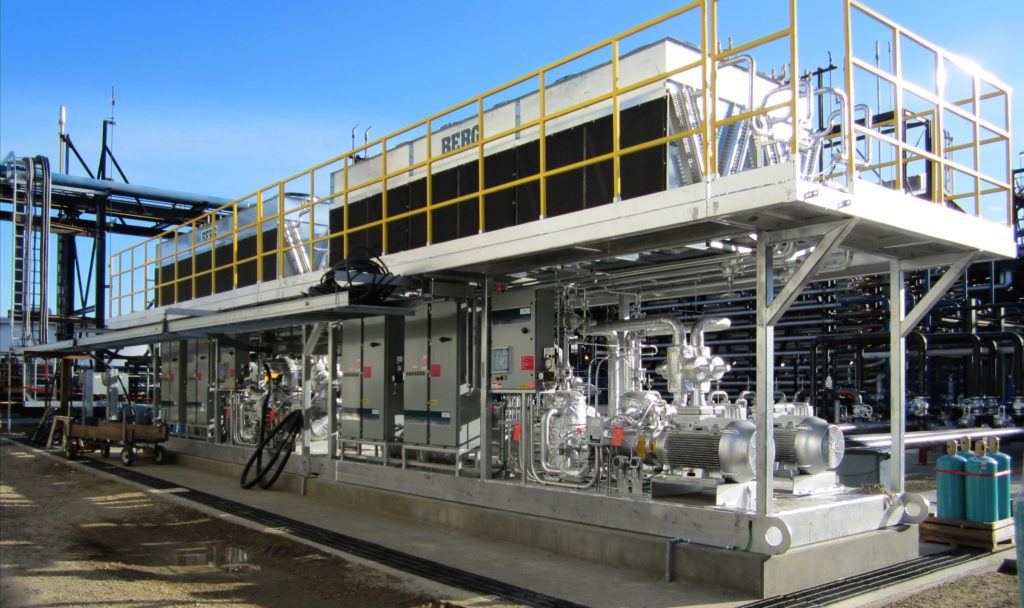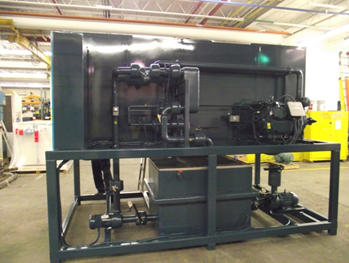Servicing industrial refrigeration equipment often means working outdoors on rooftop piping and condensers, and with our wildly varied Canadian climate you’ll be exposed to extreme heat and humidity, as well as extreme cold and windchill. Working outdoors in the winter months can bring about unique challenges and hazards and not following the proper procedures can quickly put you at risk. The Canadian Centre for Occupational Health and Safety (CCOHS) has specific recommendations that you should follow to avoid cold-related issues like frostbite and hypothermia.

Depending on your province there may be specific legislation on the acceptable working temperatures. The Threshold Limit Values® for heat or cold stress, published by the American Conference of Governmental Industrial Hygienists is often referred to for guidelines on working in the cold.
Our core body temperature needs to remain steady at + 37°C (+ 98.6°F) in order to maintain normal body function, and provide energy for work. Our metabolism has to work hard to overcome the challenges that cold weather provides.
The most important part of being prepared for working in the cold is dressing properly. By choosing loose-fitting layers you’ll allow your body to trap heat, and yourself to adjust them throughout the day as your activity level changes. If you wear too many layers, or too warm of materials you will sweat, and when it begins to cool you will quickly become chilled.
Workplace Safety North recommends that you avoid wearing cotton and goose down materials. Once cotton becomes wet (from sweat or other moisture) it will begin to pull heat from your body. Avoid wearing cotton socks, underwear or inner layers. Goose down is also not recommended, as it loses its insulation powers when exposed to excess moisture. Instead choose fabrics such as wool, polyester fleece or polypropylene.
If you’re working in the cold, it can quickly become not only uncomfortable but also hazardous to your health. People effected by cold temperatures often do not realize they are in danger. An easy way to avoid this is for your employer to set up safety guidelines and a simple buddy system. Proper education and training is paramount for all members of the team so they know the signs and symptoms of cold related illnesses, understand re-warming procedures, and correct clothing practices. Employers can also choose equipment with thermal insulation, or use tools that can be easily operated while using cold weather clothing and gloves.
Adjusting the rate of work on your project is also vital in cold weather. When you’re working at too high a rate you will sweat excessively and become chilled, or have your clothing become wet. Limit periods of standing or sitting as well, as working at too slow of a speed will cause your workers to become cold.

In a regular climate, your body will retain an internal temperature average of 37°C and in a moderately cold environment will only fall 1°C – 2°C due to your body’s regulating system. Due to extreme cold however, your body will be unable to adjust and compensate for the rate of heat loss. Once your body temperature begins to fall, exposed parts of your body will begin to experience pain, followed by increasing numbness and severe shivering. Once your body stops recognizing cold pain, grievous injuries can occur without your noticing it.
If exposure to cold continues, muscular weakness, drowsiness and dilated pupils begin to show. Your body’s usual response to cold, shivering, will soon cease as well. These are all signs that your body’s core temperature has fallen below 33°C and hypothermia has set in. Should your body reach 27°C you will fall unconscious, your heart stops around 20°C and brain function ceases around 17°C.
Should you see any of these symptoms, the effected person should be moved to a heated shelter immediately, and you should seek medical advice as soon as possible. Never ignore a cold injury, as it can be very difficult to judge the severity. Never rub the affected area as frozen tissue will have ice crystals in it. Avoid using hot water to rewarm the tissue, and instead use gentle and slow warming techniques. Frozen tissue is highly susceptible to infection and gangrene due to loss of blood supply.
Being prepared with a proper plan ahead of time will mean the difference between a safe and productive day, or one that ends with a health hazard. All of our technicians are fully trained in workplace safety and make sure to have working in the cold procedures set up for outside installations and servicing.